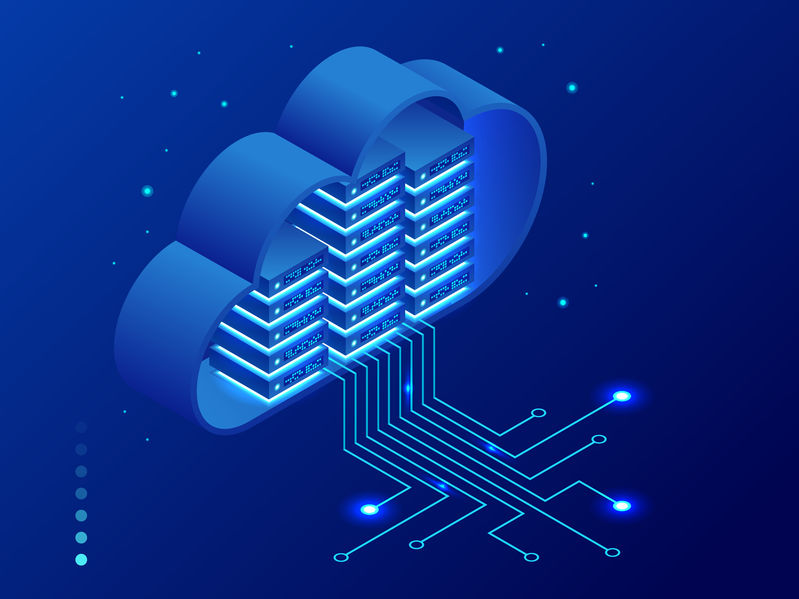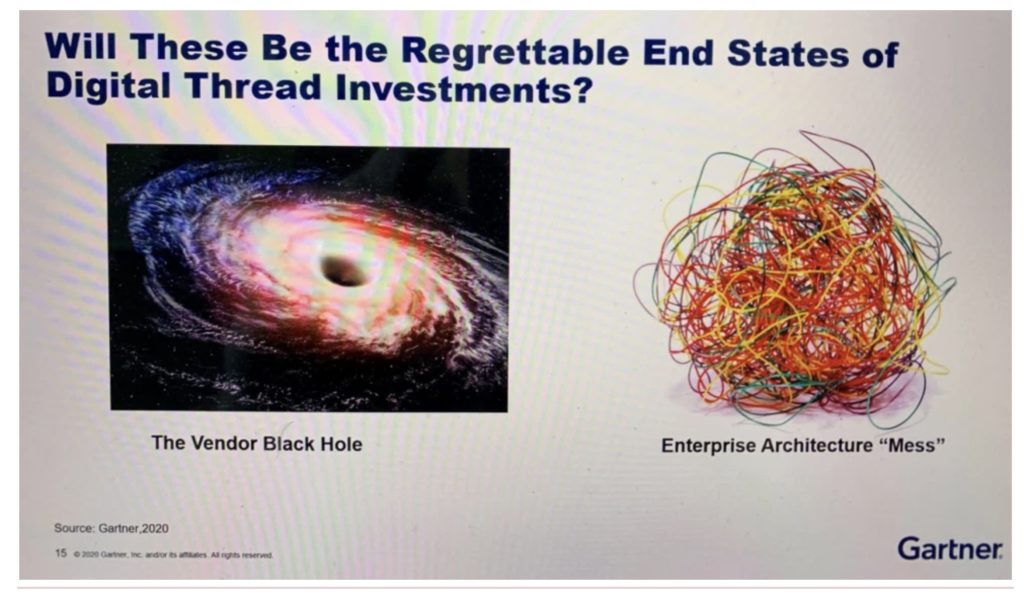
Earlier this week, one of my readers asked me a question about the lifecycle of IT systems and PLM systems in particular. According to the comment, all commercial IT systems/applications are to some extent „black holes“, locking you somehow into continuous costs and since few IT systems last forever, companies need to migrate from one back hole to the next one.
The comment reminded me of my earlier article From PLM platforms to Online Services. Platformization was a hot word a few years ago. But, an unfortunate result of tightly integrated vertical platforms provided by a single vendor is the so-called “The Vendor Black Hole”. The following slide was presented by Marc Halpern last year at the PDT Europe 2020 event.

For more than two decades in the industry, I’ve seen a number of PDM and PLM systems and, although there are many successful and extremely valuable systems, the lifecycle of the system itself is some sort of inevitable – new systems are coming, getting mature, adopted by companies and then becoming old and replaced by something that every company usually calls “new generation of the product”. Sometimes these replacements are easy and sometimes, it puts customers in the position of digging out of the black hole. In this case, the system is replaced by the same vendor, companies can expect some level of support, but if they move to another vendor or software, it can be much more complex and expensive. Besides that, even the same products provided by PLM vendors are going through the process of “major generation shifts” that require changes of data models and eventually an upgrade.
Is there a better way?
PLM vendors are moving from selling software licenses to subscriptions. Major PLM vendors are in the different stages of this migration, but the process is underway. There is no doubt that the future business model of PLM applications is belonging to SaaS and subscription models. Will it solve the problem of black holes? In my view, it depends on what degree of business and functional transformation it will go.
SaaS and Hosted Applications
The subscription business model is not a very new idea and goes back many years ago to IBM and the mainframe era and was called time-sharing service. The expansion of the internet in the 90s brought the idea for application service providers (ASP) – companies that hosted third-party applications. It was popular specifically for business applications. SaaS is extending the idea of ASP but shifts it towards companies developing their own applications. While these hosted applications allow us to improve access to applications and reduce IT pressure, it is not enough to make a difference and remove potential “black holes” of applications.
Multi-Tenant SaaS Applications and Data Services
The major shift in SaaS applications can happen with the migration into multi-tenant architecture and, in the future, shifting the focus from applications to data and data services. This is how companies can break the loop of “black hole replacements.” A multi-tenant SaaS platform will change the business model and turn vendors into service providers building value over time. The “hosted” system eventually becomes old and needs to be replaced, a system that turns data into a value for customers can be different…
In traditional models, the focus is on the application and functions provided by the system. The functions require improvement, existing technology is becoming old and eventually needs to be replaced. The new model is focusing on the data and then vendors will have an incentive to rebuild applications around the data all the time. You can see it in the development of global web applications provided and true multi-tenant SaaS services. Nobody cares how many times these vendors are rebuilding the software, as far as the focus on continuous data support, vendors will continue to focus on building even more value around it.
What is my conclusion?
Future development of multi-tenant SaaS applications and turning them into online data services can break the continuous loop of PLM application “black holes” replacement. New data services will create an incentive for vendors to build long-lasting services and focus on the value of the data provided to customers and to an entire value chain. It brings many questions about data service openness, interoperability, and licensing. I hope to talk about how I envision the transformation will happen in the next blogs. Just my thoughts…
Best, Oleg
Disclaimer: I’m co-founder and CEO of OpenBOM developing a digital network-based platform that manages product data and connects manufacturers and their supply chain networks. My opinion can be unintentionally biased.
The post How PLM Can Move From Black Holes Of Vertical Platforms To Online Data Services? appeared first on Beyond PLM (Product Lifecycle Management) Blog.



Be the first to post a comment.